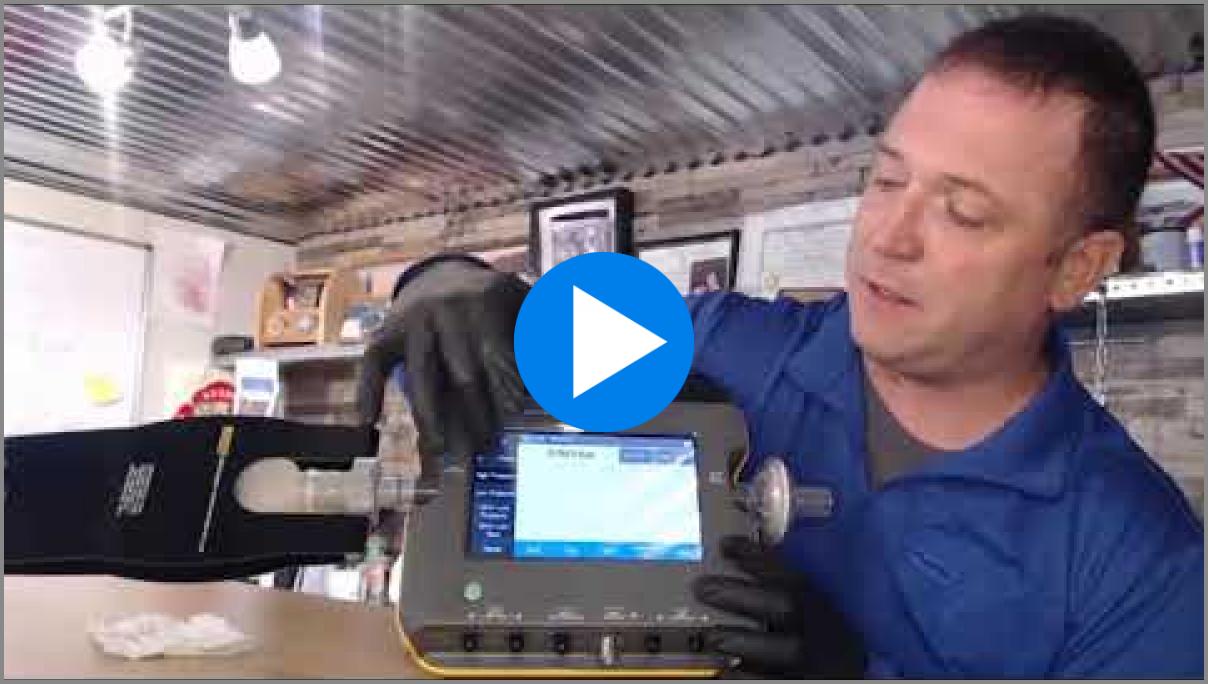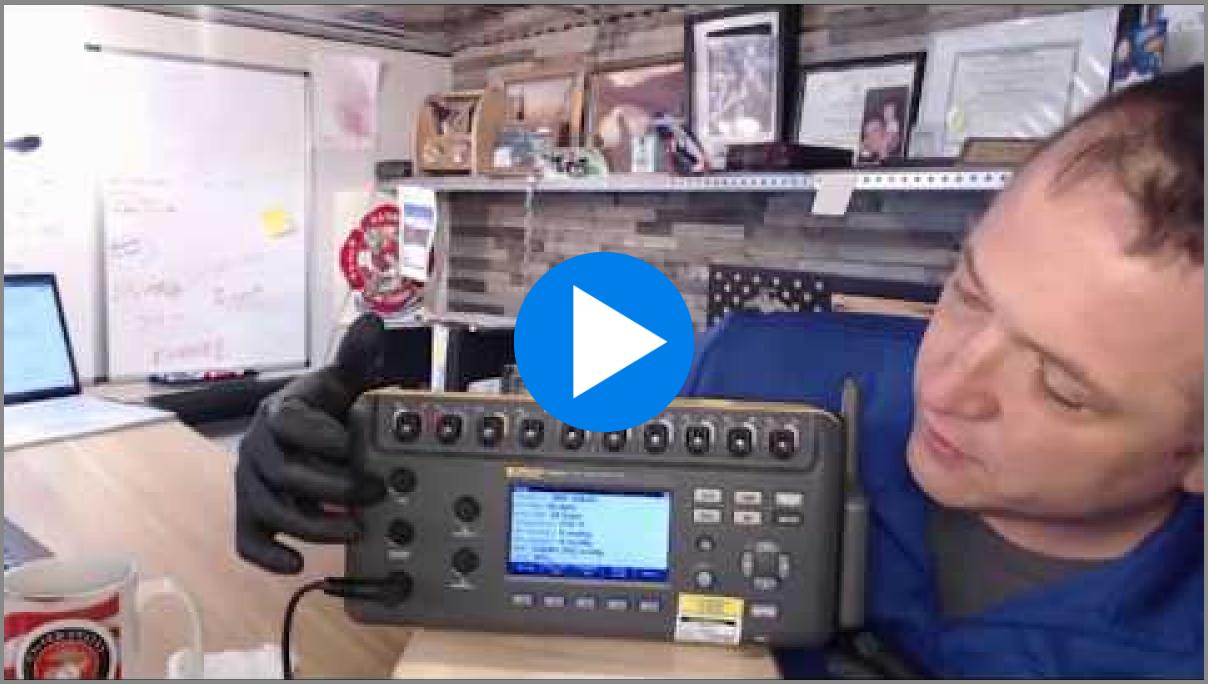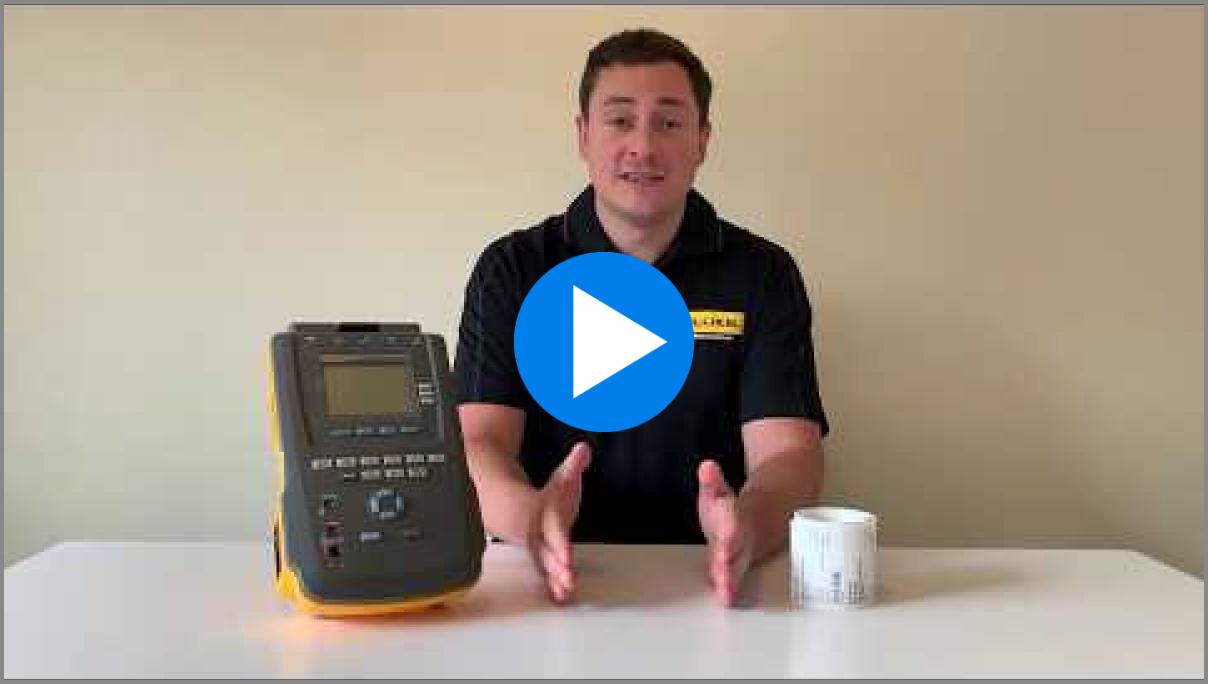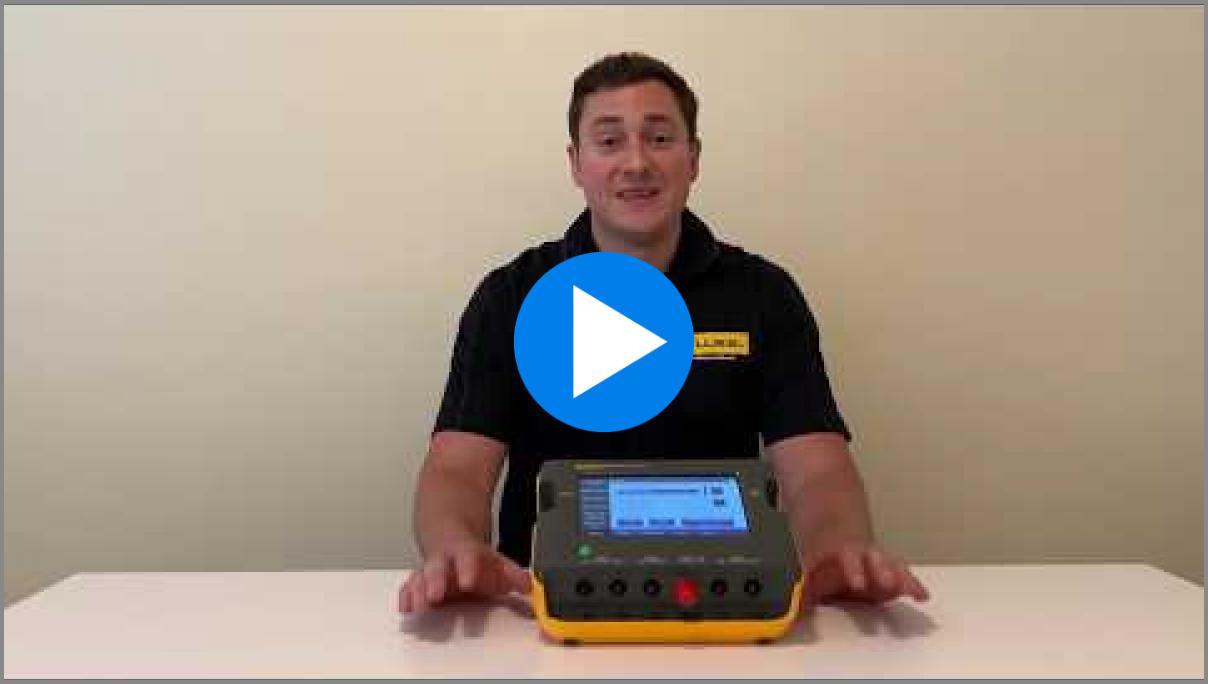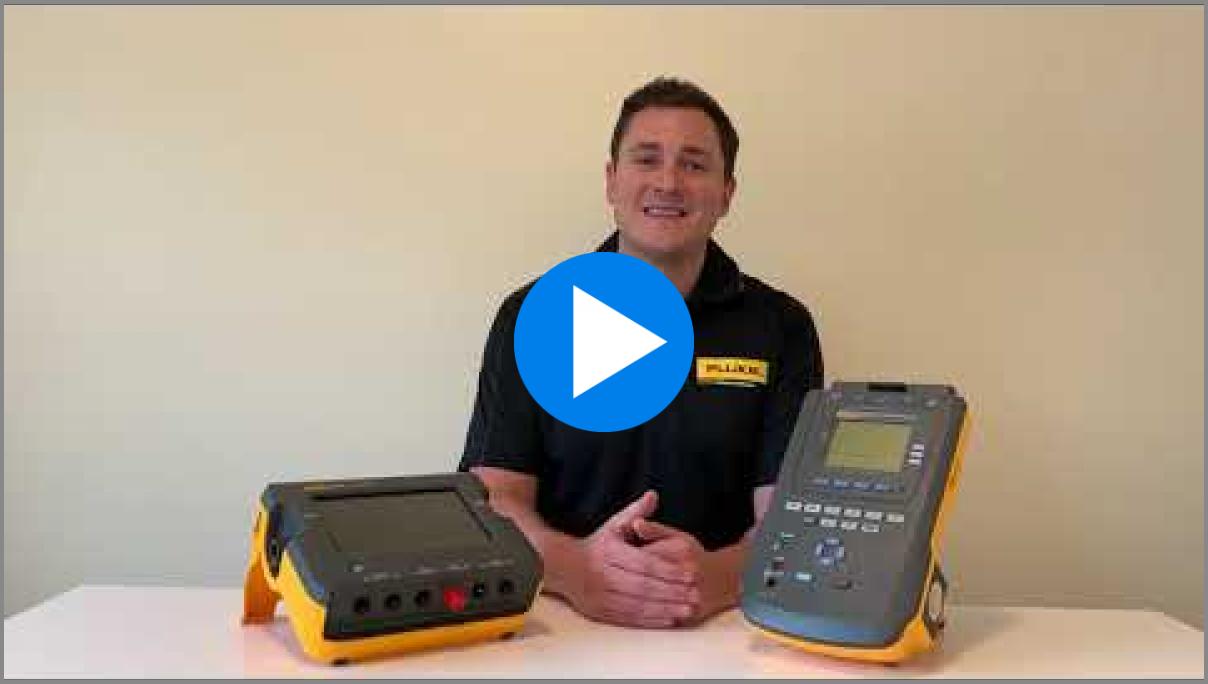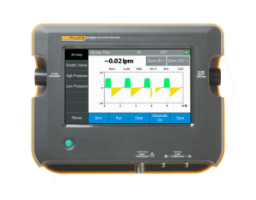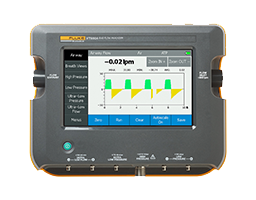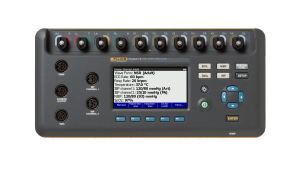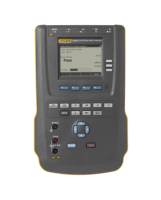We have put together some helpful how-to videos for you
- How to streamline your ventilator and patient monitor PM's and incoming inspections and do more with less
- How to stay safe and effectively reduce cross-contamination in the hospital
- How going paperless can help during the COVID-19 crisis
Some helpful webinars:
Optimize your infusion test strategy
Safe use of your ventilator tester
Watch this video as Justin Ross CBET shows how you can keep the spread of contamination throughout your ventilator testing to a minimum (using VT900A ventilator tester)
Video Transcription
The COVID-19 coronavirus is highly contagious and is believed to be spread through respiratory droplets.
I am doing my part to stop the spread of it and working from my home office, so if you hear any loud or weird noises in the background, I have three very active boys running around upstairs.
That said, I would like to talk to you today about special considerations in testing ventilators and anesthesia machines. Today I'll be using the Fluke Biomedical VT900A. The same concepts can be applied to Fluke Biomedical VT650 or other ventilator anesthesia machine testers you can find on the market.
The first thing I would like to talk about is the use of a pre-filter between the device you are testing and your analyzer. This will protect the flow tubes in your analyzer as well as your test lock from contamination. And this could be considered to be changed in between cases or when you believe it's been fouled. Water and other contamination will restrict the airflow and can alter your readings. These are supplied by Fluke Biomedical or you may be finding them in your hospital's central supply. Typically associated with brand new, breathing or with the anesthesia machines.
The next thing I would like to talk about is the use of rubber gloves. Both the VT650 and the VT900A can be operated while you are wearing rubber protective gloves and you can see that I can simply change the screen while wearing my gloves.
The next thing I would like to talk about is limiting the number of devices you are using to carry into the room to do your job. The VT650 and the VT900A incorporate multiple devices all into the one chassis. We have our main flow tube, for flow, pressure, volume and oxygen. We also have an ultra-low flow port at the bottom, as well as a pressure meter. It also does room temperature, humidity, and atmospheric pressure. Cutting down the number of devices you need to carry into the room. Which means less devices that you'll have to decontaminate when you are done. Another consideration is to leave your bag outside, the carrying case this comes in is cloth and can absorb those contaminants. When you're done using your VT650 or VT900A, shut it off and use the decontamination wipes, which are hospital supplies, and not only wipe down the front operating surface, but the back of the device and all the sides as well before you move to the next device you're testing.
For more information, check back at FlukeBiomedical.com often. Thank you very much, and have a great day!
Some useful application notes:
Ventilator testing: Ensuring the correct measurement of breath parameter
Carry less, decontaminate less
Watch this video as Justin Ross CBET shows how you can minimize the spread of contamination throughout your patient monitor testing (using ProSim 8 Patient Simulator)
Video Transcription
Hello, I am doing my part to help stop the spread of the COVID-19 coronavirus by working for my home office. There are a few moments of quiet when my wife shovels peanut butter and jelly sandwiches and macaroni and cheese into my boys. So I thought I would talk to you today about the ProSim 8.
The COVID-19 virus attacks patients' lungs so there will be an increased need for patient monitoring in hospitals.
With that, there could be an increased need for testing and service of those patient monitors. There are some considerations when servicing monitors in hospitals right now.
Please try to limit the number of devices you carry in to service those monitors. Typically you need three to four, even maybe five devices to do all the jobs that one ProSim 8 can accomplish. With the quality ECG, two channels of NIBP, respiration, temp, cardiac output, SpO2, non-invasive blood pressure, as well as building pressure chambers, you can do all these tests all through one box. This will limit the number of things that you're carrying around, also limit the number of things you have to decontaminate when you're done.
Another feature about the ProSim 8 is it has a centralized heart rhythm, so the same heart rate will apply to all the functions at one time and you can customize settings to streamline your time that you are spending on these monitors.
Some other considerations you can use with the Fluke Biomedical ProSim 8 is it does do fetal simulations. Again, one more feature all in one box.
For more information check back on our website, flukebiomedical.com. Thank you and have a great day.
Useful application note:
Six parameters in five minutes: Time-effective testing of patient monitors
Distance yourself from paper results
Watch this video as Justin Ross CBET explains how workflow automation can help contain the spread of viruses (using OneQA Workflow Automation Software)
Video Transcription
I'm Justin Ross with Fluke Biomedical. I'm working from my home office today. So, if you hear any crashes or bangs in the background, we're out of cheese sticks and the boys are getting ornery.
That said, I want to talk to you about some special considerations with the COVID-19 coronavirus. It's believed to be spread through respiratory droplets. In the traditional method of recording our test results, we use a notebook and a pen and write down the results and then take this document to our shop and transpose it into the computer.
What I want to do today, ostensibly the COVID-19 coronavirus is transmitted through respiratory droplets, let's just take some water, like your droplets, and pour it onto my desk here. And then we'll take our notebook and assuming that we're going into the patient room or patient area to do our testing, we are going to set our notebook right down into that water, or the virus, and then when we pick it up, we can see the water stain on the back of the notebook and then when we transport this notebook around to the rest of the medical center, setting it down on different surfaces and contaminate all those surfaces with our water drop, or COVID-19 coronavirus.
A better option might be to carry around a laptop computer. This way you can type your results right into your laptop and you're not transposing them, saving some time. Another consideration is when you set this same laptop on our drop of water and pick it up, you might have one little wet spot, but, all laptops are either plastic or metal on the outside so take a disinfectant wipe from the facility and simply wipe off the surfaces and decontaminate it and then you're free to move this device to other areas of the hospital and continue your job.
Something else to consider is the use of our brand new software called OneQA. The OneQA software is a test automation software. It lets you build the tests that you need back in your shop and then take them out to the floor, nothing other than your notebook, the equipment you need for testing and your tools. And then as you record all of your results, all of it goes into this and you can export right back to your CMMS platform, saving even more time for you to be taking care of our patients.
For more information, call us at flukebiomedical.com and check back often as we do updates. Have a great day and stay healthy!
Streamlining electrical safety test during ventilator incoming inspection
Watch this video with Michael Raiche explaining how you can streamline electrical safety test for your ventilator incoming inspections (using the ESA615 Electrical Safety Analyzer)
Video Transcription
Before you put your new ventilator into service you're going to want to perform an incoming inspection. This is to make sure that nothing happened in transit between the medical device manufacturer and your hospital. This should be performed to domestic or international safety standards and the best way to do that is using an electrical safety analyzer with on-board automation.
The ESA614 and 615 have built-in procedures that you can execute with the push of a button that meet those standards. Once the test data is on the device you can pull it off over USB, using the ESA614/615 test results converter, or you can pop out the SD card and put that in your computer.
If you have a need for more advanced workflow automation we have OneQA software. This allows you to create your own test procedure, and even put in components of VT testing. So in one procedure you could have VT and ESA, all your test reports in one report for that one asset ID.
The other great thing is that you can automate the ESA portion of testing. So if you have an ESA612, 614, 615, or 620, OneQA is able to take over the functionality of that device and pull the data off, so it'll execute the test, it'll populate you test report, so you don't have to. This saves you a lot of time. Also, if you have a need for printing, and you use a PM sticker like this, you can plug in an external printer and print that label right on the spot. . Have a great day and stay healthy!
Taking the pressure off ventilator incoming inspection
Watch this video with Michael Raiche explaining how to streamline your ventilator test during incoming inspection (using the VT900A Gas Flow Analyzer/Ventilator Tester)
Video Transcription
Before putting your new ventilator into service you're going to want to perform an incoming inspection. This makes sure that nothing happened during shipping and that your ventilator is performing the way that it should. This is critical to patient safety! To do that you're gonna need a gas flow analyzer, and in front of me, I have the VT900A. Fluke Biomedical has packed some great innovation into this product to make your incoming inspections go faster and easier. The first of which is warm-up time. There's no need to keep your gas flow analyzer plugged into the wall to keep the sensors warmed up. The unit warms up essentially instantaneously. The second innovation is the test profiles. If you think about your service manual, there are many things that are specific to that brand and model of the ventilator, and you can program them all into your test profiles. The gas type, correction mode, units, all of that can be saved in there so that when you show up to your ventilator you press load, you make your connections, and you're ready to go. You can even save the load part by saying load at startup. So you're gonna save that time every unit you test.
The second thing is that we have a single flow channel. It does high and low flow so there's no need for multiple connections, there's no need for multiple modules. It's all built into the unit and it automatically compensates for temperature, humidity, and pressure, so that you don't have to. The unit also has an eight-hour battery life and onboard memory so you can stay out in the field and do all of your testing, and not worry about your test results until the end of the day because you can save them all on here. You can download them with the Excel add-in and populate those into your test reports to make the job easy as well.
If you have a need for more advanced workflow automation we have OneQA software. This allows you to create your own test procedure and even put in components of VT testing. So in one procedure, you could have VT and ESA, all your test reports in one report for that one asset ID.
Learn how Fluke Biomedical test equipment can assist in the making of ventilators
Watch this video with Michael Raiche explaining how Fluke Biomedical can help ventilator manufacturers that are ramping up production of ventilators (using the VT900A Gas Flow Analyzer/Ventilator Tester and ESA615 Electrical Safety Analyzer)
Video Transcription
As you may have seen, medical device manufacturers and OEMs are ramping up production of ventilators to keep up with demand. Many of these OEMs already use Fluke Biomedical products in their production line. They use products like VT to ensure that the ventilators are performing the way they should before they're delivered to a hospital. And they use products like ESA with higher test currents like the ESA 620 which isn't pictured here, to make sure that the product is safe for use before delivery.
OEMs look to Fluke Biomedical because we have the accuracy, the reliability, but also the remote command set to allow them to do what they need to do. The remote command set allows them to take control over the VT or the ESA to control its functionality and pull data off into their own laboratory software and create whatever documentation they need. Fluke Biomedical plays in every realm of the medical device lifecycle.
So if you are an OEM that's ramping up production, reach out to Fluke Biomedical or learn more at flukebiomedical.com
Justin Ross, CBET explains how to test safely in the ICUs
Learn how you can use OneQA software, an ESA615/614 or the IDA-5 to safely test infusion and other medical devices safely in the ICU.
Video Transcription
Hey everybody. I'm Justin Ross, of Fluke Biomedical and RaySafe. And I was supposed to be doing a demo, how to video today on the IDA-5 Infusion Pump Analyzer. But a friend of mine called me up here yesterday and he presented a scenario/question for me and I thought I'd share our thoughts with you. What the question was, is, there a facility has isolated a wing and a few floors there for the Corona COVID 19 patients? And they want to limit the amount of equipment they're bringing in and out of there for testing and repair. So in order to prevent infection, control.
That said, I want to talk to you about some special considerations with the COVID-19 coronavirus. It's believed to be spread through respiratory droplets. In the traditional method of recording our test results, we use a notebook and a pen and write down the results and then take this document to our shop and transpose it into the computer.
So we talked through some possible solutions. And the first solution I want to present to you is our brand new Fluke Software called OneQA. This is the landing page on our website, FlukeBiomedical.com. click on a software and you can find the OneQA brand new test automation software. Another option would be, is the built in automation right into our devices. So the device has was asking about specifically was his Infusion Pumps. So what I have here is our ESA615 the 614 will work just as well. It has onboard test automation as well does our IDA-5 Infusion Pump Analyzer. So you can go down to your shop and you can build your test protocols, here. You know your volumes, your pressures, your occlusion pressure.
If you're doing PCA's your bolus and then you tri-treat. All of that can be programmed into the device down at the shop where you can put your electrical safety protocol and what information you wanna record, make the model serial number. Simple enough, bring this up to the floor, set them up. You can use a standard USB keyboard to type your results into it or typing the equipment data, you know the control number and such and then run the test automation. Save that test when you're done, it'll automatically save your results, pass, fail all that it will be saved, and when you're done then with the 614 and 15 you can power it off, and pop out the SD card and bring this down to your Biomed Shop and pull your data back off. Or with the IDA-5, shut it off, unplug it, disconnect it.
This can decontaminate this device. So wipe down all the sides and then bring this down to your Biomed Shop and extract the data from it. In fact, you really don't even need to bring your PC up because of all the onboard automation here. Bring it down to your shop, pull the data back off again, either if they're connecting your PC straight to the device or using SD card or here right through the PC port in the back of it, pull your results off, then you can export to an Excel and attach that to your CMS platform.
For more information, call us at flukebiomedical.com and check back often as we do updates. Have a great day and stay healthy!

